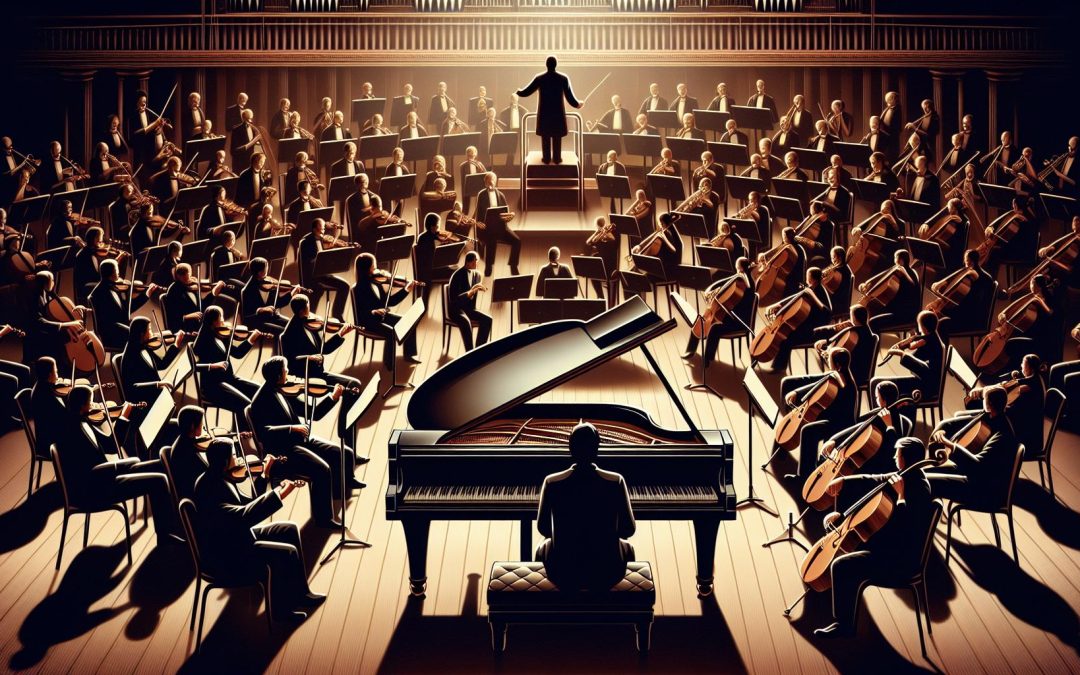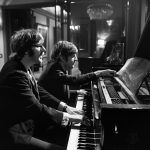Keyboard concertos have long been a staple in the world of classical music, captivating audiences with their dynamic interplay between soloist and orchestra. They're not just pieces of music; they're conversations, full of drama, whispers, and sometimes, a spirited debate. From the intricate works of Bach to the passionate expressions of Rachmaninoff, these concertos have stood the test of time, enchanting music lovers across generations.
What makes these masterpieces so enduring? Perhaps it's the way they allow the keyboard to shine, offering a dazzling array of emotions and technical prowess. Or maybe it's the way they seamlessly blend the individual brilliance of the soloist with the collective power of the orchestra. As we dive into the world of famous keyboard concertos, we'll explore the magic behind these musical dialogues and discover why they continue to resonate with listeners today.
Johann Sebastian Bach: The Baroque Genius
Johann Sebastian Bach, a name synonymous with the Baroque period, redefined the landscape of keyboard concertos. His work not only demonstrates technical mastery but also an emotional depth that bridges the soulful and the divine. Bach's keyboard concertos are a testament to his ingenuity, offering listeners a lasting exploration into the capabilities of keyboard instruments within the concertante medium.
Unlike his contemporaries, Bach's ability to intertwine melodious intricacies with the thematic unity across movements is unparalleled. His concertos for harpsichord, often adapted from his own violin concertos or those of his peers, showcase a brilliant use of the instrument not just as a solo voice but as an integral part of the orchestral tapestry. This innovative approach has made pieces like the Brandenburg Concerto No. 5 and the Concerto for Two Violins in D minor, BWV 1043 (adapted for keyboard), cornerstones in the classical repertoire.
The Brandenburg Concerto No. 5, specifically, marks a monumental shift in concertante writing, as it features one of the earliest examples of a keyboard cadenza, solidifying the harpsichord's place as a soloistic instrument. This concerto, with its intricate interplay between the soloist and ensemble, embodies the essence of a musical conversation that's both dynamic and expressive.
| Year | Piece | Significance |
|---|---|---|
| 1721 | Brandenburg Concerto No. 5 | Early keyboard cadenza |
| 1739 | Concerto for Two Violins in D minor | Adapted for keyboard; thematic unity |
Moreover, Bach was ahead of his time in understanding the keyboard's expressive potential. His Italian Concerto, BWV 971, written for a two-manual harpsichord, exploits the contrasts between the instrument’s different registers, mimicking a dialogue between distinct musical groups. Such compositions not only highlight Bach's virtuosic skill but also his forward-thinking approach to composition and performance.
Wolfgang Amadeus Mozart: Brilliance in Simplicity

Wolfgang Amadeus Mozart, a name synonymous with classical music, revolutionized the keyboard concerto, bringing an unparalleled level of craftsmanship and elegance. Unlike Bach, who laid the groundwork for complex, intricate keyboard compositions, Mozart's approach favored clarity, simplicity, and melodic beauty. This shift not only marked a new era in music history but also showcased Mozart's genius in composing works that were both accessible and deeply expressive.
Mozart's keyboard concertos stand out for their lyrical melodies, clear structures, and emotional depth. He often employed a conversational style between the solo instrument and the orchestra, creating a seamless dialogue that was innovative for its time. Mozart composed 27 keyboard concertos, the majority of which were written for the piano, his instrument of choice. These works played a crucial role in elevating the piano concerto to a major musical form, highlighting the instrument's capabilities and expressive range.
One of Mozart's most celebrated keyboard concertos is the Concerto No. 21 in C major, K. 467. Known for its serene and tender second movement, this concerto showcases Mozart's ability to pair a simple melody with rich harmonic textures, creating a work of profound beauty and subtlety. Critics and enthusiasts alike often cite the second movement's theme, famously used in the film "Elvira Madigan," as an example of Mozart's gift for melody.
| Mozart's Keyboard Concertos | Key Features |
|---|---|
| Number of Concertos | 27 |
| Favorite Instrument | Piano |
| Notable Concerto | Concerto No. 21 in C major, K. 467 |
| Key Aspect | Conversational style between soloist and orchestra |
Ludwig van Beethoven: Revolutionary Romanticism

As the musical baton passed from Mozart to Ludwig van Beethoven, the world of keyboard concertos braced for a revolutionary transformation. Beethoven's contributions to this genre weren't just numerous; they were groundbreaking. His five piano concertos, composed between 1795 and 1809, reflected his transition from the Classical to the Romantic period. Unlike his predecessors, Beethoven infused his concertos with unparalleled emotional depth, structural complexity, and a pioneering spirit that would forever change the course of music history.
Beethoven's First Piano Concerto in C major, Op. 15, serves as a bridge between classical restraint and romantic expressiveness. Here, Beethoven expanded the traditional concerto framework, offering a broader emotional range and greater orchestral integration with the solo piano. This concerto was a declaration of Beethoven's unique voice, one that was not afraid to explore new territories.
In The Third Concerto in C minor, Op. 37, Beethoven's revolutionary zeal shines brightly. The minor key brings a dramatic tension previously unheard in piano concertos, creating a passionate, almost tumultuous dialogue between the soloist and the orchestra. This concerto marks a significant moment in Beethoven's career, showcasing his ability to convey deep, complex emotions through music.
The Emperor Concerto, No. 5 in E-flat major, Op. 73, stands as a pinnacle of Beethoven's achievements in the concerto genre. It earned its nickname "Emperor" for its grandeur and majesty, qualities that reflect Beethoven's own musical ambition. This masterpiece combines virtuosic demands on the soloist with a rich, expansive orchestral sound, embodying the spirit of Romanticism in its heroic vigor and lyrical beauty.
Beethoven’s piano concertos significantly impacted the development of the genre, incorporating innovative techniques that highlighted the piano's capabilities and expanded the concerto form. He introduced novel concepts, such as the Cadenza, a section where the orchestra pauses, and the pianist performs a solo improvisation, showcasing their virtuosity. This became a staple in concertos that followed, allowing soloists to display their technical prowess and interpretative skills.
| Concerto | Composition Year | Key | Nickname |
|---|---|---|---|
| No. 1 | 1795 | C Major | |
| No. 2 |
Conclusion: The Timeless Allure of Keyboard Concertos
Beethoven's contributions to the keyboard concerto genre are a testament to his genius. His work not only marked a pivotal moment in musical history but also continues to inspire musicians and audiences alike. The emotional depth and structural innovation found in his concertos, from the First to the iconic Emperor, have set a high bar for composers and performers. They've transformed the concerto form into a dynamic dialogue between the soloist and orchestra, where virtuosity meets expressive storytelling. Beethoven's legacy in the realm of keyboard concertos is a reminder of music's enduring power to move and astonish. It's clear that as long as there are pianos to play and ears to listen, the magic of these masterpieces will continue to resonate through the ages.
Harlan Kilstein began playing piano during covid with no piano background at all. He taught himself how to play learning what to do and what not to do.
Today he's an advanced intermediate player and can help you grow in your skills because he learned all this on his own.








